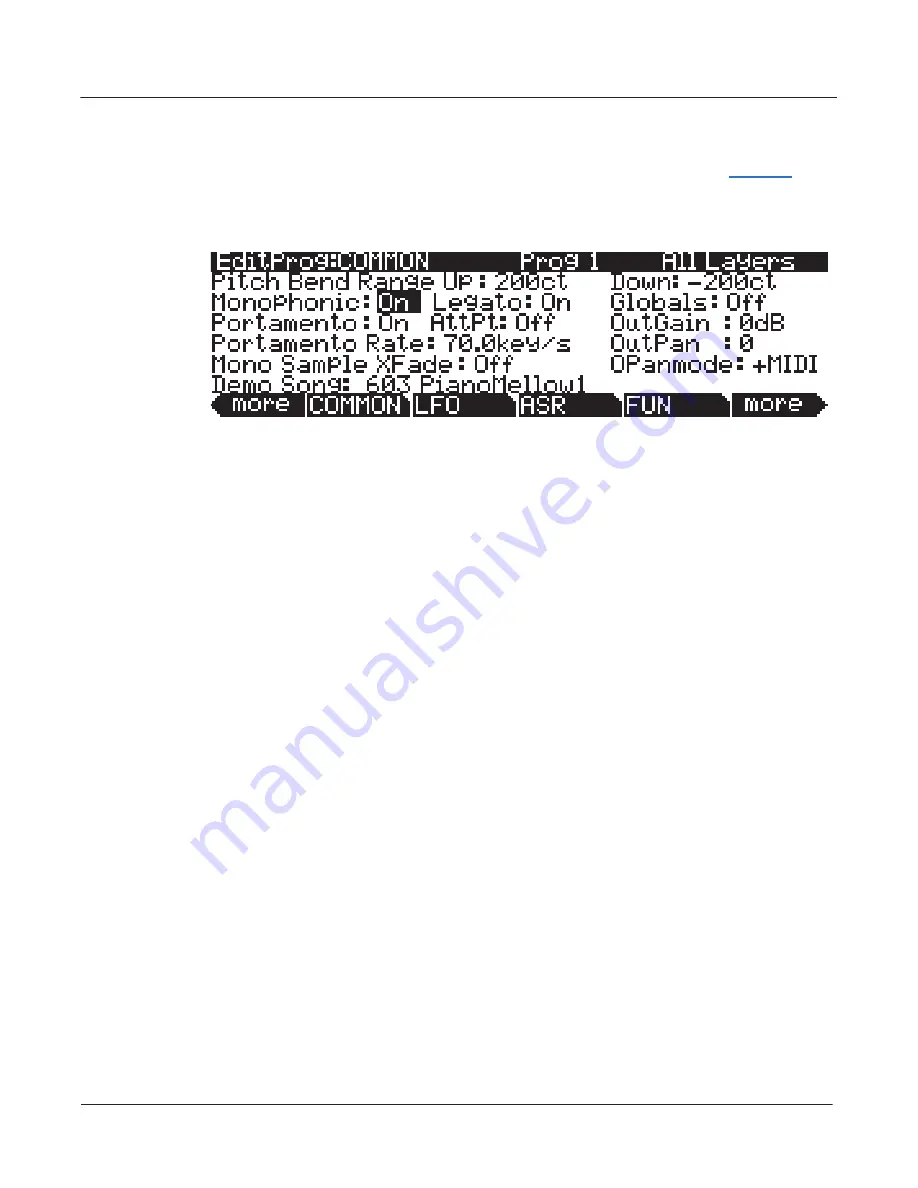
6-36
Program Mode
The OUTPUT Page
When On, the program will play only one note at a time. This makes it possible to use and to
determine the behavior of the portamento feature. Do not set Ignore Release On (
page 6-20
) when
you are using Monophonic programs, since the lack of Note Off messages will prevent you from
switching programs properly.
Legato Play
When Legato Play is on, a note will play its attack only when all other notes have been released.
This is useful for realistic instrumental sounds.
Portamento
This parameter is either on or off. The default value of
Off
means that portamento is disabled for
the current program.
Portamento is a glide between pitches. On actual acoustic instruments like violin and bass, it’s
achieved by sliding a finger along a vibrating string. On most keyboards that offer portamento,
it’s achieved by holding down a key that triggers the starting note, then striking and releasing
other keys. The pitch glides toward the most recently triggered note, and remains at that pitch as
long as the note remains on. The PC3A gives you two ways to get portamento. See the Attack
Portamento parameter below.
When applying portamento to multi-sampled sounds (Acoustic Guitar, for example), the PC3A
will play more than one sample root as the pitch glides from the starting pitch to the ending
pitch. This may cause a small click at each sample root transition. You can eliminate clicks by
using the Mono Sample XFade parameter (see below.)
Portamento Rate
The setting for Portamento rate determines how fast the current note glides from starting pitch to
ending pitch. The value of this parameter tells you how many seconds the note takes to glide one
semitone toward the ending pitch. At a setting of
12 keys/second
, for example, the pitch would
glide an octave every second. The list of values is nonlinear; that is, the increments get larger as
you scroll to higher values.
Attack Portamento
This parameter toggles between two types of portamento. When set to
On
, the PC3A remembers
the starting pitch so you don’t have to hold a note on to achieve portamento. The pitch always
glides to each new note from the previously triggered note. When set to
Off
, the pitch will glide
to the most recently triggered note only when the previous note is still on (in other words, you
must use legato fingering).
















































